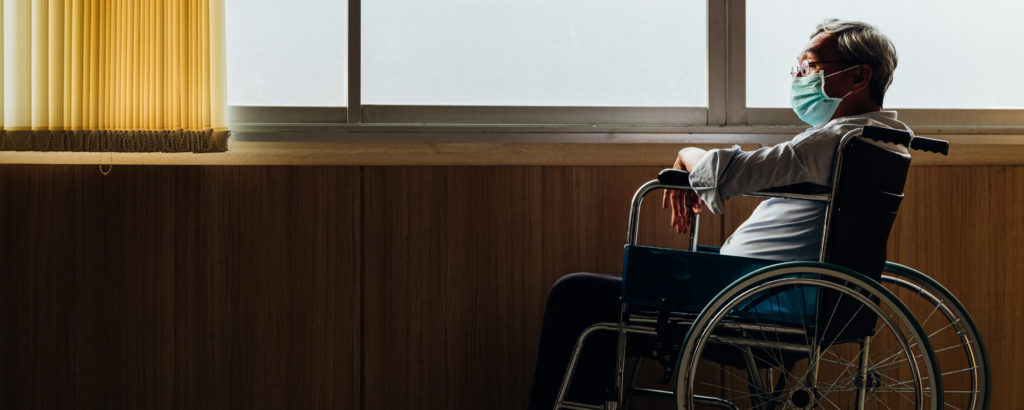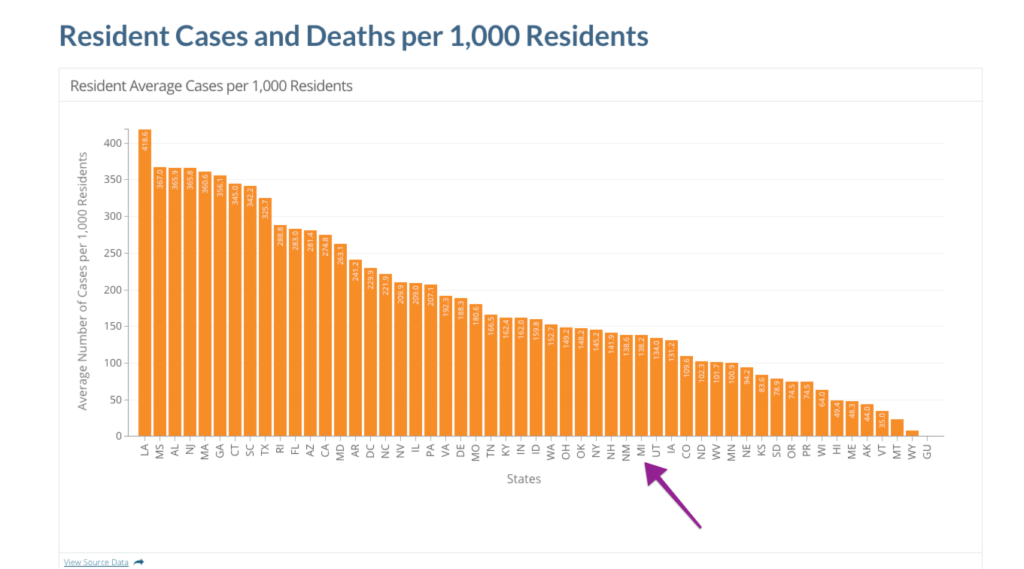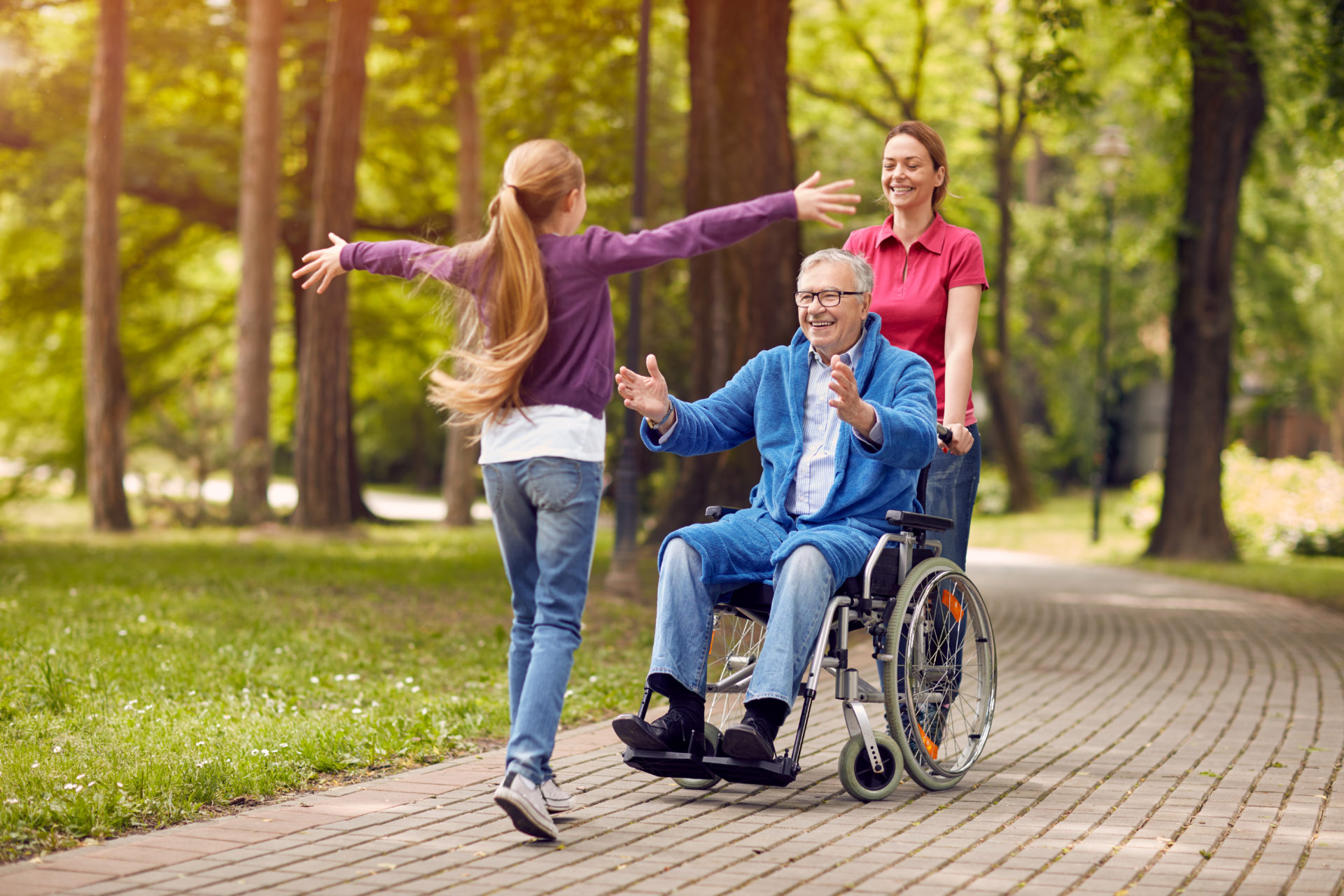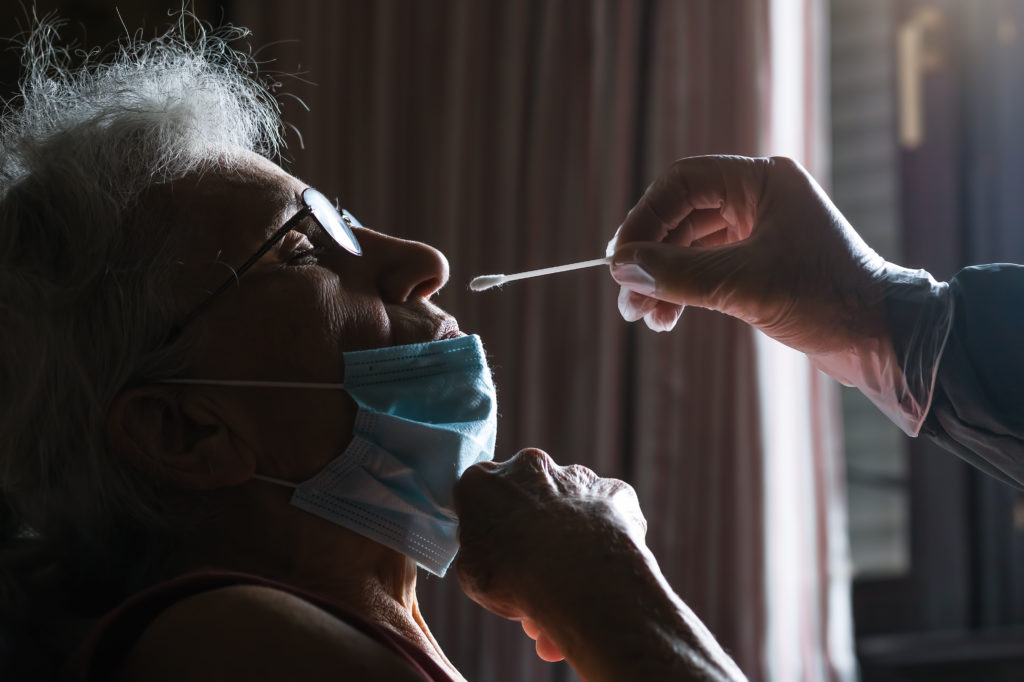
6 Misconceptions About Nursing Homes During COVID 19

It’s old news that older people are more vulnerable to contracting the coronavirus. In fact, eight out of ten COVID-related deaths have been people aged 65 and older. With these statistics, it is only natural to fear for the lives of our loved ones.
As information continues to build, we have learned and adapted our procedures and practices to keep the residents at St. Ann’s Home safe. Because of how rapidly information is being learned and due to the plethora of faulty information bombarding our news and social media feeds, there is a lot of confusion about what is true, and what isn’t. This directly affects the residents in assisted living facilities, as their livelihood and ability to interact is especially dependent on the virus and everyone’s ability to follow rules.
For the safety of everybody, but most importantly our beloved elders, we feel motivated to address some of these concerns. Keep reading below to find out what 6 misconceptions about nursing homes during COVID we have finally debunked.
Misconception #1: Staff And Residents Are Not Tested
The Center for Medicare and Medicaid Services (CMS) has made it a priority to maintain the safety of residents and staff of nursing homes or any other assisted living facilities. Nursing homes are now required to facilitate testing for their employees and residents in order to make sure that they are being kept as healthy as possible. [/caption]
Like many places, it is standard procedure to check temperatures and assess the health of each staff member each morning before being allowed to walk through the facility.
On August 25th, 2020, CMS established Long-Term Care (LTC) Facility Testing Requirements for Staff and Residents. This rule specifically requires facilities to test residents and staff, including individuals providing services under arrangement and volunteers, for COVID-19 based on parameters set forth by the HHS Secretary. This memorandum provides guidance for facilities to meet the new requirements.
Specifics such as how frequent, and who gets tested have been outlined. If you want to learn more about the specific guidelines passed for testing requirements check out the link below! (Insert CMS link)
Misconception #2 Nursing Homes Are Not Receiving Tests Directly
ALL nursing homes have, or will have received testing kits ASAP so that they can be immediately administered to those who need it (and after staff has completed requisite training). The distribution of instruments and tests are prioritized for facilities based on theCDC’s epidemiological hotspot data, and facilities whose data indicate an elevated risk for COVID-19 transmission.
So how are nursing homes getting their tests? Shipping schedules are based on the availability of instruments and test kits. Facilities that received early shipments (within the first 3 weeks) were located in CDC epidemiological hotspot counties.
All nursing homes with a current CLIA Certificate of Waiver should receive their shipment by the end of September 2020.
Misconception #3: Michigan Is High Risk For COVID-19

Before you panic, Michigan is NOT a coronavirus cesspool.
A group of technologists, epidemiologists, health experts, and public policy leaders at Covid Act Now has flagged the infection rate for Michigan as high. This means that if you get infected, it’s likely that you’ll infect more than one person—continuing the cycle of community transmission. However, Michigan is actually in the bottom half of states as far as reported COVID cases go.
Michigan reports only 138.2 deaths per 1,000 for nursing home residents, compared to California’s 418.6 per 1000 ( that’s a whopping 202% more). When you’re looking at the numbers, it’s important to understand that there is also a lot of nuance to interpreting the numbers in the context of ongoing community transmission.
Misconception #4 Families Are Not Informed About Test Results

Not only are family members notified of test results as soon as possible, but the appropriate federal, state, and local public health agencies are also notified. Laboratories must have a CLIA certificate, and they must report data within 24 hours of all test completions daily.
Testing sites must report all diagnostic test data in accordance with the HHS Lab Data Reporting Guidance for COVID-19, and meet these reporting requirements by August 1, 2020, including providing your facility name and CLIA number when reporting results.
To find out more information about data and reporting requirements, please visit the CDC’s website.
Misconception #5: My Loved One Left Their Nursing Home, Now They Won’t Be Able To Return

Given the current circumstances, a new law has been passed that protects the rights of residents in nursing homes. Residents do not have to forfeit any rights to return to their assisted living homes that they would normally have under state or federal law in the scenario that they have to be hospitalized or placed on therapeutic leave.
The pandemic has created unprecedented financial complications for many people and assisted living homes are aware of this. That’s why each home is taking measures to be considerate and accommodate their patients’ needs.
Long-term care facilities are barred from effectuating an eviction or involuntary discharge against a resident for nonpayment. They also cannot deny any resident access to the facility, except as otherwise provided in this order.
Even though nursing homes are obligated to admit patients, they should still fend for the health of their other residents. Therefore, if a test comes back positive they cannot admit a patient back unless they have the proper guidelines and equipment to take care of them.
Many assisted living homes, like us here at St. Ann’s, are making an effort to minimize outside exposure. This means that they are discouraging (though not banning) letting your loved ones leave the home unless it’s an emergency.
Misconception #6 I Can’t Visit My Loved Ones During This Time

Most assisted living homes are still closed to non-essential visitors at this time. However, if you do go to visit a loved one, you can expect to have to complete a full screening, as well as wear a mask and face shield while inside of the facility.
At St. Ann’s, we’re only allowing essential visitors inside of our home for the time being. As always in all we do, the safety and well-being of our residents is our highest priority. We care deeply for every one of our residents, staff, volunteers, and others associated with St. Ann’s.
But that doesn’t mean you can’t interact with your loved one. We know that it’s a priority to keep in constant communication with relatives, but we are also very aware of the risks of in-person visits. That’s why we have set up a virtual visit portal so that you can enjoy each other’s company face-to-face, whether you’re in the same room or not.
CONCLUSION
Although some days it feels like it’s been around forever, the coronavirus is still a new virus with a lot of unknowns. As more information comes out every day, everyone is doing their best to stay on top of the virus and follow the CDC and other health leaders’ guidelines. Make sure that before you enter a virus-sensitive facility that you have taken the time to check out the guidelines, as different places will have their own various rules along with what the CDC recommends.
Still have questions or concerns about how the coronavirus is affecting assisted living/nursing homes? Reach out to the experts here at St. Anns today, we’d love to help you in any way that we can.


